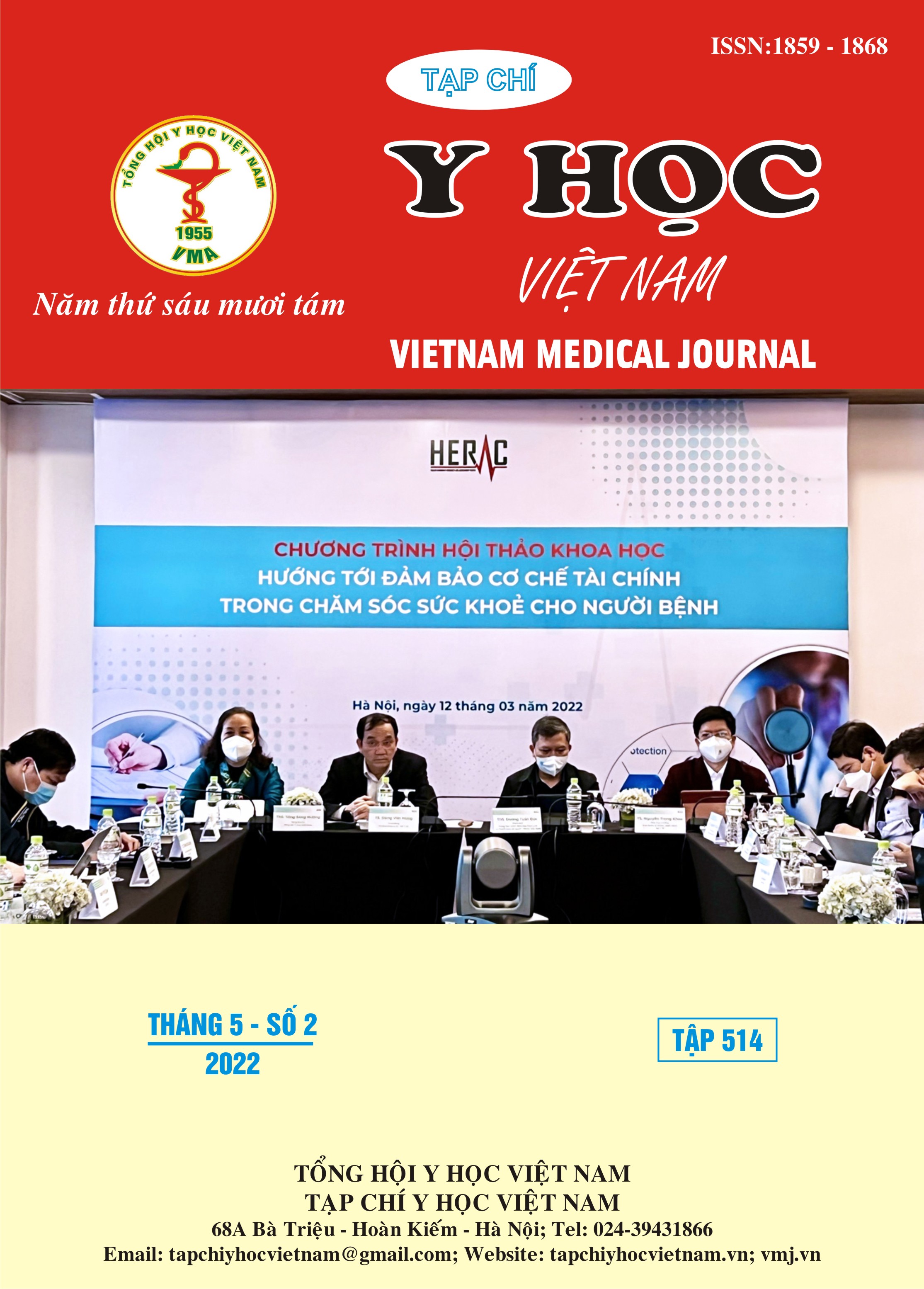CHARACTERISTICS OF ATROPHIC GASTRITIS ACCORDING TO OLGA CLASSIFICATION AND SOME RELATED FACTORS OF PATIENTS AT HANOI MEDICAL UNIVERSITY HOSPITAL
Main Article Content
Abstract
Background: The diagnosis of gastric cancer by OLGA is very accurate but can be assessed by simpler methods. Objective: Determine pathological characteristics and factors related to atrophic gastritis.
Materials and methods: Design a cross-sectional description, recording the pathological and laboratory characteristics of 121 patients who came for examination at Ha Medical University Hospital. Results: The mean age of the subjects was 53.2 ± 11.4 years old. The rate of men is lower than that of women, the rate of Hp infection is 66.9%. 61.1% of subjects had atrophic gastritis according to OLGA level I, 31.4% grade II, 5.0% grade III, and 2.5% grade IV. The degree of atrophic gastric mucosal inflammation was related to Hp infection status with p < 0.05. As age increases, OLGA levels increase. The concentration of PGI, II, and the ratio of PGI/II decreased according to the severity of atrophic gastritis according to OLGA with a statistically significant difference with p < 0.05. PGI concentration decreased in severe atrophic gastritis with a strong correlation r = - 0.512 with p < 0.05; The ratio of PGI/II decreased in the presence of severe atrophic gastritis with the mean correlation r = - 0.317 with p < 0.05. With PG threshold (+) when PGI < 70 ng/ml and ratio PGI/II < 3, pepsinogen index is not able to distinguish severe atrophic gastritis (OLGA III-IV stage) from severe atrophic gastritis. mild atrophic gastritis with p = 0.619. Conclusion: There is a relationship between Hp infection with increased severity in the OLGA classification. PGI concentration and PGI/II ratio have an inverse correlation with the degree of atrophic gastritis according to OLGA classification. It has not been found that the threshold of PGI < 70 ng/ml and PGI/II < 3 can distinguish severe and mild atrophic inflammation of the gastric mucosa according to the OLGA classification.
Article Details
Keywords
gastric cancer, atrophic gastritis, OLGA
References
2. Tong Y, Wang H, Zhao Y, et al. Diagnostic Value of Serum Pepsinogen Levels for Screening Gastric Cancer and Atrophic Gastritis in Asymptomatic Individuals: A Cross-Sectional Study. Front Oncol. 2021;11:652574. doi:10.3389/fonc.2021.652574
3. Hamashima C, Systematic Review Group and Guideline Development Group for Gastric Cancer Screening Guidelines. Update version of the Japanese Guidelines for Gastric Cancer Screening. Jpn J Clin Oncol. 2018;48(7):673-683. doi:10.1093/jjco/hyy077
4. Vũ Trường Khanh và cs (2021) Mối liên quan giữa nồng độ pepsinogen huyết thanh và viêm teo niêm mạc dạ dày theo phân loại OLGA. Tạp chí Y học lâm sàng. Số 120. tr.18-23.
5. Wang X, Lu B, Meng L, Fan Y, Zhang S, Li M. The correlation between histological gastritis staging- ‘OLGA/OLGIM’ and serum pepsinogen test in assessment of gastric atrophy/intestinal metaplasia in China. Scand J Gastroenterol. 2017;52(8):822-827. doi:10.1080/00365521.2017.1315739
6. Hu Y, Zhu Y, Lu NH. Recent progress in Helicobacter pylori treatment. Chin Med J (Engl). 2020;133(3):335-343. doi:10.1097/CM9.0000000000000618
7. Rugge M, de Boni M, Pennelli G, et al. Gastritis OLGA-staging and gastric cancer risk: a twelve-year clinico-pathological follow-up study. Aliment Pharmacol Ther. 2010;31(10):1104-1111. doi:10.1111/j.1365-2036.2010.04277.x
8. Trivanovic D, Plestina S, Honovic L, Dobrila-Dintinjana R, Vlasic Tanaskovic J, Vrbanec D. Gastric cancer detection using the serum pepsinogen test method. Tumori. Published online May 17, 2021:3008916211014961. doi:10.1177/03008916211014961
9. Chen XZ, Huang CZ, Hu WX, Liu Y, Yao XQ. Gastric Cancer Screening by Combined Determination of Serum Helicobacter pylori Antibody and Pepsinogen Concentrations: ABC Method for Gastric Cancer Screening. Chin Med J (Engl). 2018;131(10):1232-1239. doi:10.4103/0366-6999.231512


